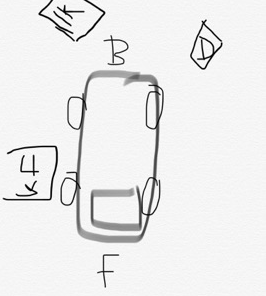Overall I thoroughly enjoyed taking part in the Film Light studio this semester. When it began, I made it my personal goal to learn more about cameras, especially including how to work with elements such as depth of field. Overall I hoped to gain a better understanding of cameras and be able to confidently use one independently. Additionally, I wanted to learn more about cinematography and expand my knowledge on what makes cinematography “good”, through informed analysis of films and my own work. I hoped to increase my appreciation of cinematography with a better view of the craft.
I can definitely say that I achieved all of these goals, and more. It has been extremely interesting this semester to gain not only a great understanding of cinematography, but also to delve into other roles too. I feel I learnt invaluable information about film light that I would not otherwise have known, and it is not only purely interesting but also incredibly useful for my future in my degree and beyond. I felt that doing this studio allowed me to release creativity in instructive ways. In terms of the assignments, I think the nature of having them be experiments where we, as individuals and groups, could explore particular elements of film lighting was an excellent way to learn. Also, by not setting a task like creating a short film, we were able to fully focus on film lighting and have the other elements secondary in the task.
When screening our work, I think it was good that we showed both experiments. In the first, it was clear we were aiming to imitate particular frames. Although we did not explain that we were using only one light and two boards, I think we still showed that we had learnt from class what variables were necessary in order to achieve the lighting. Also, as the cinema screen was big and the first time we had seen our work on it, it made any mistakes or elements we were not happy with quite clear ( to us at least). For the second assignment, I think it was clear that we used lighting to primarily establish a mood to the scene. Like has been discussed in the studio, this is not decided without other factors – casting, sound, production design – to name a few. For example, we manufactured a lighting setup that looked nice for each subject’s face.
If I were to extend the second piece we created, I would explore the scene taking place outside of the car, and even using no lights. This is an experiment I would have liked to do had we had more time, or even another assignment. Making it a 3-5 minute scene, where we get to explore the characters more and have that moody overcast natural lighting could make a very cool piece.
I think James, Chloe, Tash and Jonah explored this idea in a way, as they used only the light available to them for the scene. I think this was an interesting idea to work with because they had to be creative with what was in front of them. Additionally, they took inspiration from The French Connection, exploring moving through spaces with different colour temperatures. If they were to go further, I would like to see where they could find colour temperature beyond just the available light, and even manufacture it.
Ada, Karida and Rain also explored differing colour temperatures, with a memorable shot of the warm interior lighting and cool toned light from the exterior. It looked quite effective to have such a stark contrast in the shot, and I especially liked the rain on the window displayed in one of the shots. In contrast to the other group, they manufactured the contrasting colour temperatures, similar to the Venom inspiration in their presentation. I think this was a natural progression to the ideas of colour temperature we had learnt in class, and just goes to show that there are many ways we can go about achieving a certain style or look.
I think being an audience member at the screening was a lot of fun and it was great to see an amalgamation of all our work in one. It was especially cool to see how every group had adapted those ideas from class, and what directions everyone went in. I definitely grew an appreciation for the work put in, especially seeing where some experiments had developed from the previous. Like in class, it was a delightful experience to watch back everyone’s work, and equally as enjoyable to reflect on this work and expand on some ideas. If Film Light has taught me anything, it is that watching films and other’s work is one of the best ways to expand my knowledge on cinematography and film lighting.






